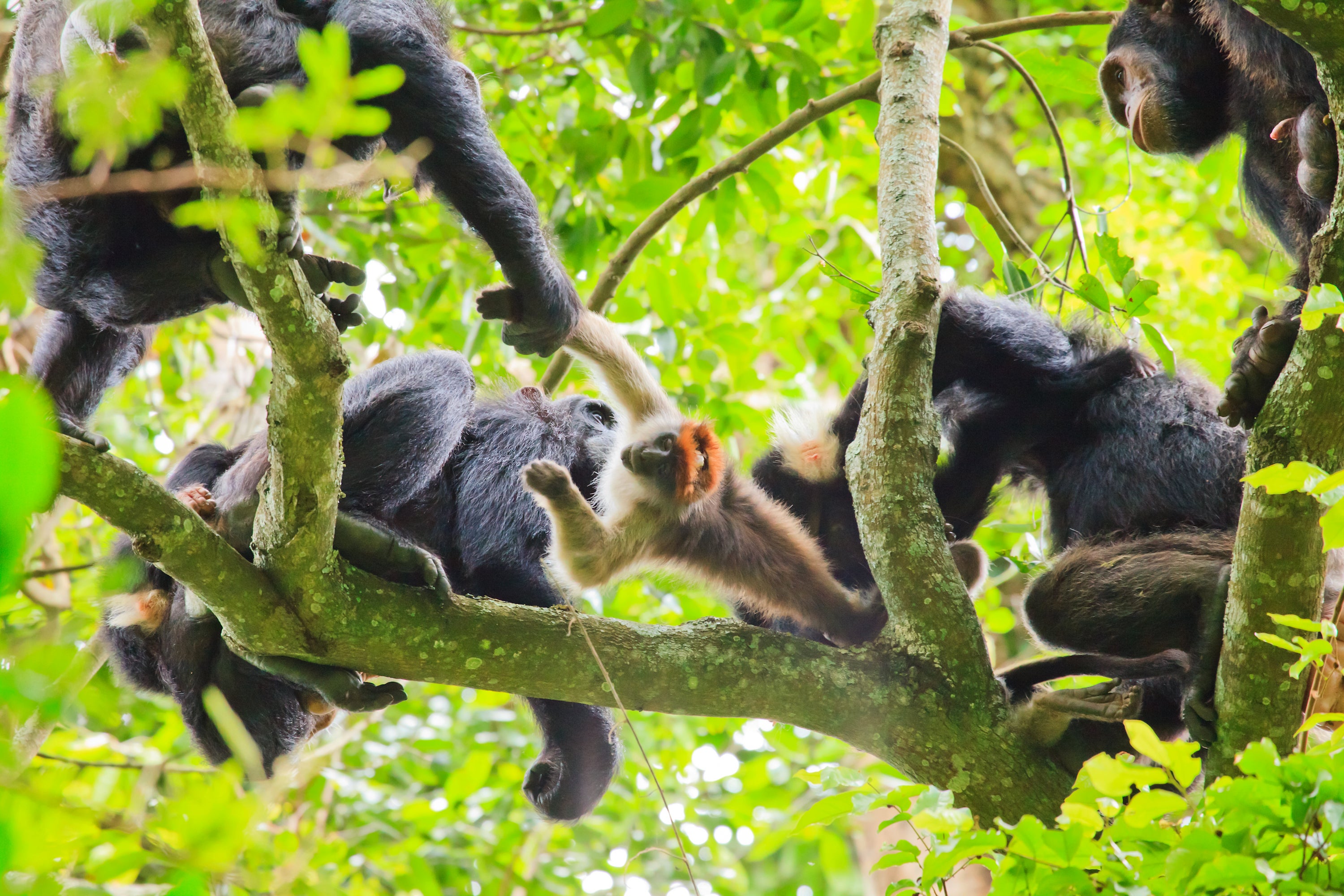Chimpanzees produce ‘hunting bark’ to co-ordinate group members – study
Similar to humans, the animals use communication to coordinate their cooperative behaviour.

Your support helps us to tell the story
From reproductive rights to climate change to Big Tech, The Independent is on the ground when the story is developing. Whether it's investigating the financials of Elon Musk's pro-Trump PAC or producing our latest documentary, 'The A Word', which shines a light on the American women fighting for reproductive rights, we know how important it is to parse out the facts from the messaging.
At such a critical moment in US history, we need reporters on the ground. Your donation allows us to keep sending journalists to speak to both sides of the story.
The Independent is trusted by Americans across the entire political spectrum. And unlike many other quality news outlets, we choose not to lock Americans out of our reporting and analysis with paywalls. We believe quality journalism should be available to everyone, paid for by those who can afford it.
Your support makes all the difference.Chimpanzees produce a “hunting bark” to call members of their group and co-ordinate a hunt, new research suggests.
Similar to humans, the animals use communication to coordinate their cooperative behaviour – such as during hunting.
When chimpanzees produce a specific sound, known as the “hunting bark”, they recruit more group members to the hunt and capture their prey more effectively, the research suggests.
Dr Simon Townsend from the department of psychology at the University of Warwick and a Professor at the University of Zurich (UZH) helped lead the study.
He said: “Communication plays a key role in coordinating complex acts of cooperation in humans, and this is the first indication that vocal communication might also facilitate group cooperation in our closest living relatives.”
Chimps do not only forage for fruit, and every now and again they will seek out opportunities to get some meat rich in protein.
However, their prey is agile monkeys that spend a lot of time in the canopy, and in order to catch them, the great apes benefit from having companions on the hunt.
Scientists have found for the first time that communication is key to recruiting group members to join the hunt.
Joseph Mine, PhD student at the Department of Comparative Language Science of UZH, led the study.
He said: “Chimps who produce hunting barks provide information to those nearby about their motivation to hunt.
“This information may persuade reluctant individuals to join, boosting the overall chances of success.”
University of Warwick, University of Zurich and Tufts University researchers analysed more than 300 hunting events recorded over the last 25 years at the Kanyawara chimpanzee community in Uganda.
Hunting monkeys as a group in dense tropical rainforest where visibility is restricted can be challenging, and so vocal communication allows more efficient group work.
“Strikingly, following the production of hunting barks, we observed more hunters joining, greater speed in beginning the chase, and a shorter time to make the first capture,” said study co-last author Zarin Machanda from Tufts University, who heads up the Kanyawara Chimpanzee Project.
Researchers say it is widely accepted that communication and cooperation are tightly linked and co-evolved in humans.
However, it was unknown how far back into humans’ evolutionary past this relationship between group cooperation and communication can be traced.
Joseph Mine concluded: “Our results indicate that the relationship between vocal communication and group-level cooperation is ancient.
“This link seems to have been in place for at least seven million years, since our last common ancestor with chimpanzees.”
The findings are published in the journal Science Advances.